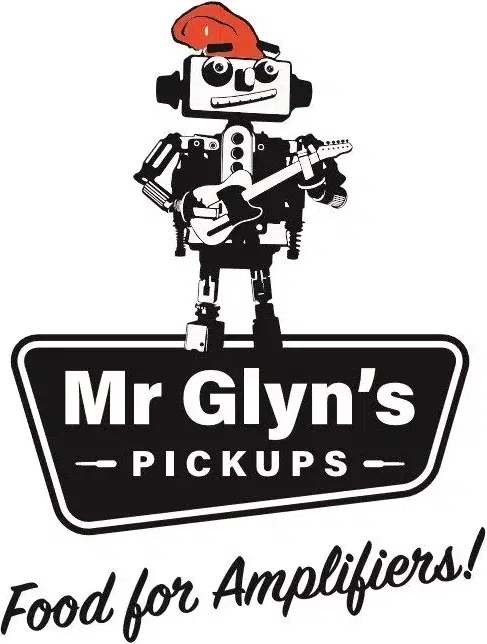Strat Wiring must be the most modded wiring of all. It’s not that the original wiring isn’t great, there are just so many other possibilities. When I worked as a guitar repairer I re-wired a lot of Stratocasters. There are so many options, so many things that can be changed. A lot of players have their favourite versions of wiring up these fantastic guitars.
Table of Contents
What I did find when I as modifying other peoples guitars is they would often come back to something close to standard wiring in the end. After trying multiple switching in every combination, series, parallel, coil tapping, humbuckers … it goes on, they often returned their Strat so something very close to the way Leo Fender originally did it back in 1954. There is a lot to be said in favour of simplicity.
Here I’m simply going to show you the standard way of wiring a Strat and add one simple and useful modification – that cheeky little red wire. I can’t recall ever being asked to remove this modification to a Strat’s wiring, there’s simply no disadvantage.
Here is the diagram using the colour code for my own single coil pickups.
Strat Wiring Diagram
How Strat controls work
The heart of Stratocasters is the 5 way switch. Interestingly it wasn’t until 1977 that Fender fitted them as standard. Before that it was a 3 way switch and players had to ‘balance’ it between 2 positions to get that famous in between Strat tone. We’ve got it easy these days. Position 2 or 4 on a 5 way is such an iconic Stratocaster sound – you can spot it anywhere.
That sound with 2 pickups on is often incorrectly called ‘out of phase’ – here’s a blog explaining what it really is.
Here is a Stratocaster control plate. It looks straightforward but why are there 2 tone controls? Must be treble and bass yeah? Well no, it’s a bit more complicated than that. This is a passive system (no battery) so the tones just cut treble giving your sound less highs, they can’t boost bass. The middle knob marked tone is the control for the neck pickup and the end one for the middle pickup.
With the switch in the position shown the neck pickup is selected and the middle knob acts as a tone. If this 5 way switch was 2 clicks on it would select just the middle pickup and the end tone know would be engaged.So you can pre-set a tone setting for a pickup. I guess it was considered a step up from the Telecaster’s single tone control for the whole guitar.

That’s great but it means with a standard stratocaster there is no tone control for the bridge pickup. If ever there was a pickup that needed a bit less treble its the strat bridge pickup. If you refer back to the wiring diagram you can see a little red wire on the switch connecting 2 legs together. Adding that little wire with mean that the tone control for the middle pickup will also work for the bridge pickup.
It’s the simplest of all Strat Wiring mods but a very useful one and a good place to start if you’re new to experimenting with wiring.
What is SSS, HSS and HSH?
SSS – means 2 single coil pickups so a simply a standard Strat configuration.
HSS – That’s a Strat but with a humbucker (H) in the bridge position. The reason you might want a humbucker is for a fatter bridge pickup sound. Standard Strat bridge pickups can sound a bit weedy. All the Strat bridge pickups I make have a little bit more power to offset this but a humbucker may well suit you better anyway. This makes for a very versatile guitar but retaining the simplicity of the original design. On stage there is so much going on that complicated switching options can often work against you.
HSH – You’ve guessed it – there’s a humbucker in the neck and bridge positions. This is often used with coil tapping. The idea is to have both Gibson and Fender sounds in one guitar. Usually positions 1 and 5 of the switch will give either bridge or neck humbucker on their own. Positions 2, 3 and 4 will be combinations of the middle single coil pickup and the humbucker with 1 coil switched off (coil tapping) or series/parallel etc. There are so many options and combinations possible and some spectacularly complicated wiring to figure out to make it work.
For some of the more complicated wiring options the conventional 5 way switch just isn’t enough. There is a type of switch commonly called a ‘super switch’ that gives these extra options. It looks the same from the outside and is the same to operate but under the hood there’s a lot more going on. This switch allows you to wire up just about all the options imaginable. Maybe I’ll write more about them some other time.
Do I turn it all up full?
A lot of players do but I feel they’re missing out on a lot of tones. Try backing off the volume and tone to about 8 and setting the amp sound to that. It really is worth trying it. As you turn the volume down your sound looses a little treble. This can really smooth things out and give you an easier tone to work with. With your volume at 8 you also have somewhere to go if you need that bit extra for a big solo.
Now I’m at the end of this blog I realise there are a lot more diagrams to draw and a lot of wiring options to discuss. Not just for Strats, there are modifications that can be done on any guitar.
For more Strat stuff and a listen to my own Strat pickups here’s my YouTube Strat Pickup demo playlist.







